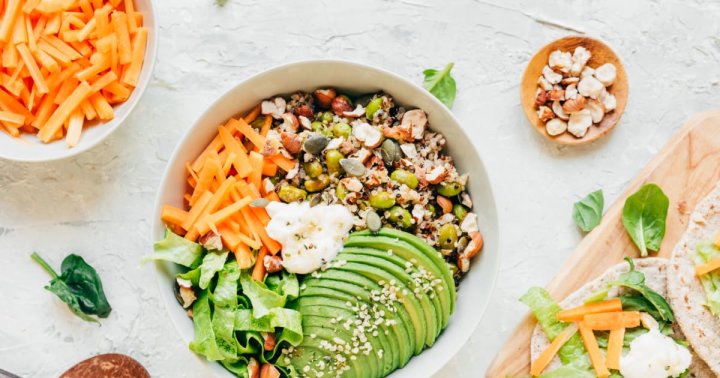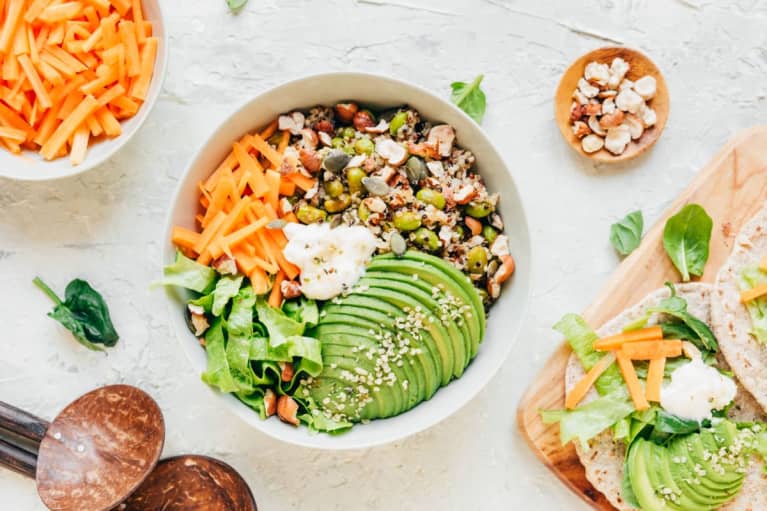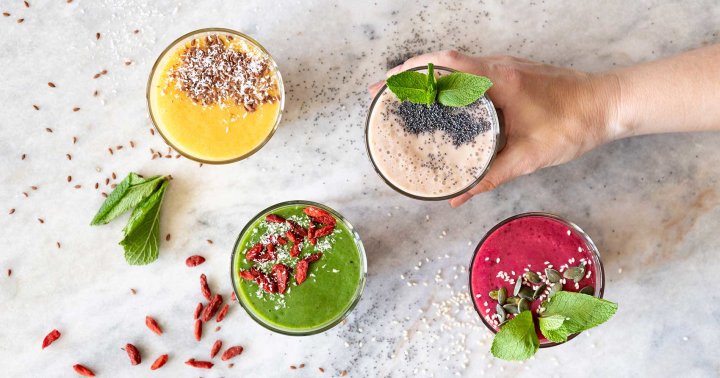This Lesser-Known Grain Is Packed With Fiber, Protein & Important Minerals
Move over, quinoa.

Our editors have independently chosen the products listed on this page. If you purchase something mentioned in this article, we may earn a small commission.
February 21, 2022 — 12:06 PM
Have you heard of kamut? This ancient grain may not be as common on grocery shelves or in nourish bowls, but it absolutely deserves your attention. Kamut (pronounced kuh-moot) is full of protein and fiber, which means it's super filling and nutritious.
In addition to providing an array of nutritional benefits, kamut is also versatile. It's similar to wheat berries and can pretty much be used interchangeably. It's also a great baking substitution if you want more bang for your buck and a boost of heartiness. Curious yet? Keep reading to learn more about this ancient grain, including what it is and how to cook it.
Kamut, also known as Khorasan wheat, is an ancient grain that has been found in Middle Eastern regions like Iran and Europe for centuries, according to registered holistic nutritionist Larissa Nicole, CPT. And even though this grain originated on the other side of the world, it has made the move stateside and grows on farms in the northern Great Plains where the climate is dry.
Functional Nutrition Training
A cutting-edge nutrition deep dive taught by the world’s foremost health & wellness experts.

What sets this ancient grain apart from traditional wheat is the fact that it's easier to digest, says registered dietitian Andrea Mathis, R.D. Unlike traditional wheat, it's also guaranteed to be organically grown and never hybridized or genetically modified. Not only will making the swap from wheat to kamut ensure you're consuming a better-for-you whole grain, but it also boasts more protein, minerals, vitamins, and even flavor.
Although kamut is very similar to wheat, you can expect a chewier texture and nuttier flavor with this ancient grain. However, the good news is in most cases, you can swap wheat for kamut without altering the flavor of your recipes.
Nutritional benefits of kamut.
One cup of cooked kamut has 9.8 grams of protein and 7.4 grams of fiber, according to the USDA. This is the type of grain that keeps those midday and late-night munchies at bay. In fact, functional medicine practitioner Inna Lukyanovsky, PharmD, says that nearly 10 grams of protein for a grain is significant.
That boost in protein, fiber, and amino acids makes kamut more beneficial for metabolism, blood sugar regulation, and energy production than processed wheat, Nicole says. "Plus, since kamut is a high-protein grain, it's a great plant-based protein source for vegetarians and vegans."
And when it comes to vitamins and minerals, there's no shortage there either. "Kamut offers zinc, which is important for immune system support; magnesium, which helps with sleep; potassium, which keeps electrolytes balanced; and selenium, which supports a healthy thyroid," Lukyanovsky says.
The short answer is no. Kamut does, in fact, contain gluten, which means it isn't ideal for those with gluten sensitivities or celiac disease. However, there are a few studies that suggest those with gluten sensitivities but not celiac are able to digest this grain without irritation or inflammation.
But regardless of the preliminary studies, kamut does contain gluten. So if you find yourself sensitive to gluten, it's best to speak with your doctor before giving it a try.
Kamut is hearty if left whole. So cooking the whole berry of this grain can take some time. Mathis suggests soaking the grain overnight to reduce overall cooking times. The next morning, you'll want to boil a pot of water with a dash of salt and add the soaked kamut to the pot. Allow the whole berries to come to a boil and then reduce the heat to medium. Cook the kamut grains, uncovered, for 40 to 60 minutes until soft. Once the grain is soft, discard the excess water and season to taste.
Kamut berries can be served as a hearty side dish or incorporated into various meals like bulking up your favorite salad with this greens and grains salad recipe or incorporating into a rich cold-weather meal of vegan one-pot bean chili.
Kamut can also be ground into a flour. Kamut flour can be used as an equal substitution for whole wheat flour. Just prepare for a slightly nuttier flavor and chewier texture if you choose to do so. "One of my favorite ways to use kamut is in baking, in place of processed white flour, including pancakes, breads, or cakes," Nicole says. "It usually gives the recipe more density."
Kamut is a grain that deserves a place in our pantries. It's not only organically grown, but it's full of protein, fiber, and important vitamins. And since it can be used in its whole berry form or ground as a flour, there's really no reason not to have this hearty ingredient on hand.
https://www.mindbodygreen.com/articles/kamut

 Aliver
Aliver 

































